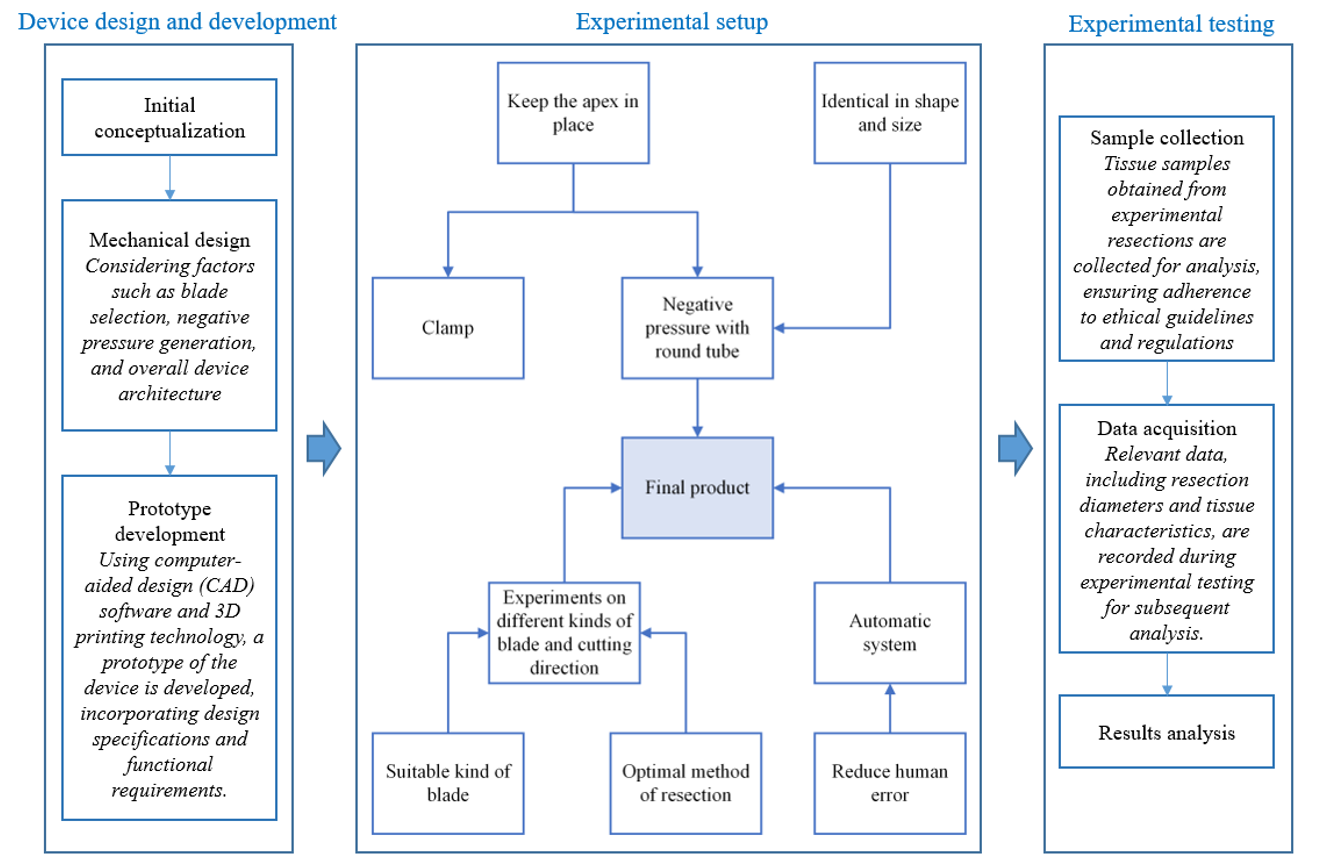Development of a 3D-printed negative pressure cutter for precise apical resection in neonatal mouse hearts
DOI:
https://doi.org/10.15419/bmrat.v11i5.886Keywords:
Apical resection, cardiac apex, negative pressure cutter, surgical scalpel blade, 3D printingAbstract
Introduction: The cardiac cells of neonatal mice, only one day old, exhibit ongoing cell cycle activity for a duration of 14 days following parturition. Their hearts have a strong capacity to replace cardiomyocytes, which disappears in adulthood, in order to respond to injuries sustained during that time. Numerous studies have been conducted to examine the intrinsic regenerative capacity of neonatal mice's hearts following a resection of 1 millimeter from the ventricular apex. However, it should be noted that there is currently a lack of specialized cutting tools designed specifically for this particular field of research. This absence of appropriate instruments may result in challenges when attempting to achieve consistent sample cuts, as human error can introduce variability. Furthermore, it is important to acknowledge that larger cuts may pose a significant risk to the subject's life.
Methods: This project involved the fabrication of a 3D-printed cutter utilizing a negative pressure system. The surgical scalpel blade is affixed to the cutter, enabling the automated removal of the apex from the heart to the desired diameter, without the need for manual measurements. The cutter underwent multiple iterations and adjustments prior to reaching its final configuration, resulting in the inclusion of numerous variables in the subsequent tests. Furthermore, due to temporal constraints, the final experiment is limited to a relatively small sample size of 16 subjects.
Results: The dataset obtained from the experiment was examined in order to draw a conclusion. It was found that the removal with the cutter has resulted in a relatively stable diameter. However, the size of the resection is still slightly greater than 1 millimeter, indicating that it has not yet reached the intended dimension initially desired.
Conclusion: The innovative 3D-printed negative pressure cutter provides a more efficient and automated method for precise apical resection in neonatal mouse hearts, overcoming the drawbacks of manual procedures and variability in sample cuts. This study represents an initial endeavor towards refining the cutter for apical resection in the hearts of neonatal mice, thereby laying the foundation for future advancements in this field.

Published
Issue
Section
License
Copyright The Author(s) 2017. This article is published with open access by BioMedPress. This article is distributed under the terms of the Creative Commons Attribution License (CC-BY 4.0) which permits any use, distribution, and reproduction in any medium, provided the original author(s) and the source are credited.
